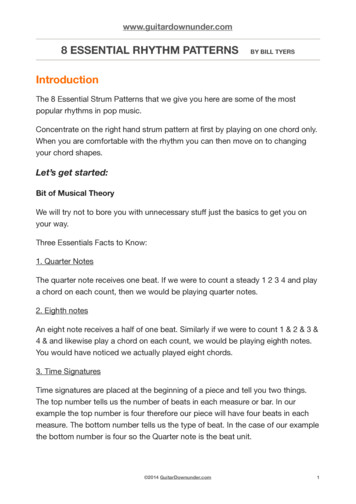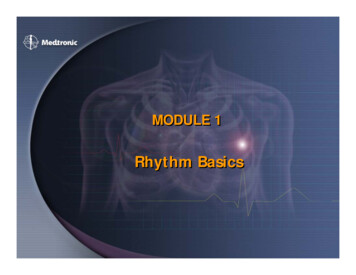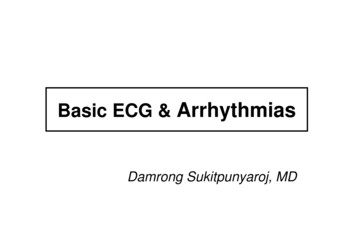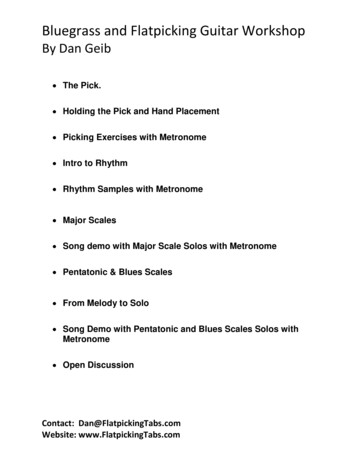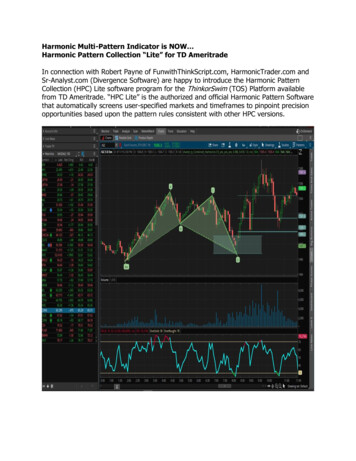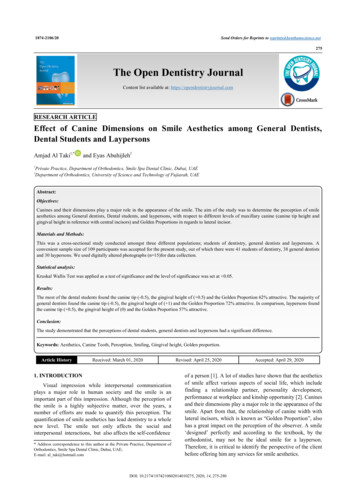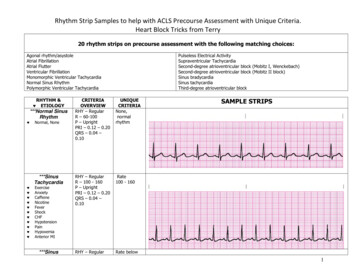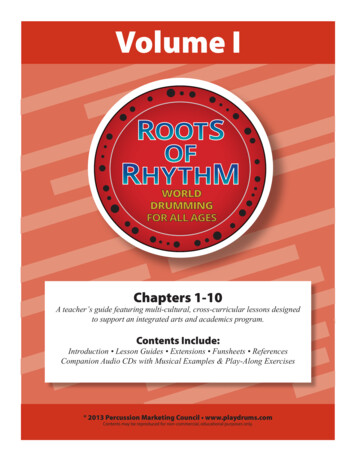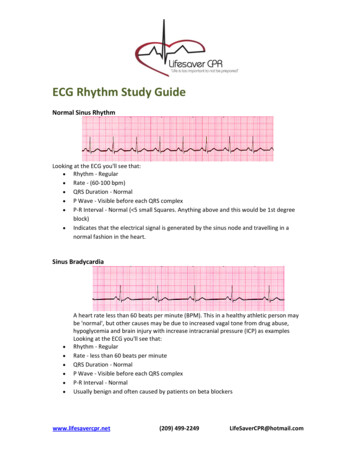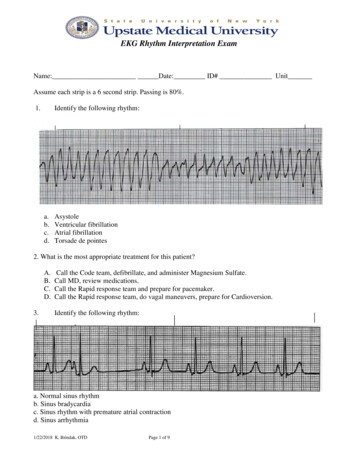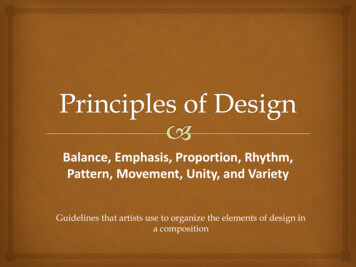
Transcription
Balance, Emphasis, Proportion, Rhythm,Pattern, Movement, Unity, and VarietyGuidelines that artists use to organize the elements of design ina composition
Balance is the arrangement of the parts of an artwork to giveVincent Van Gogh, Starry Night, 1889a sense of overall equality in visual weight.Artists have three ways to balanceartwork: Symmetrical: when one halfmatches the other half – identicalfrom a central axis. Also knownas formal balance. Asymmetrical: when the twohalves are not identical but carrysame visual weight. Also knownas informal balance. Radial: when lines or shapesspread out in a regular patternfrom a center point – like a bicyclewheel.AsymmetricalSymmetricalLeigh Ann Inskeep-Simpson,Symmetrical Garden, Acrylic onCanvisGustave Caillebotte, Rainy Day, oil on canvasRadialEnglish stained glass. William Wailes. St Matthias, Richmond. 1865.
Emphasis is the importance given to certain objects or areas inan artwork. Where one element of design dominates(dominance) the artwork. The area of emphasis is called the focal point.LocationContrastIsolationUsing Emphasis in artwork: Contrast: when one elementstands out from the rest Isolation: when an object isplaced alone and away fromthe other objects in theartwork Location: occurs when theeyes are naturally drawntowards the center of anartwork.
Leonardo da Vinci, Study of HumanProportions Proportion is the relation of the parts of an artwork toThe Listening Room, Rene MagritteMichelangelo, The Creation of Adam. 1512. Sinstine Chapel, Vatican Cityeach other and to the whole with regards to size,placement, and amount.Standard ProportionTypes of Proportion Standard Proportion: when anobject or person seems to have Altered Proportionappropriate height, width, anddepth compared to itssurroundings. Artist will use scaleto show the size of one objectverses an object. Altered Proportion: proportionshave being changed or distorted Distortion: is used to expressfeelings or ideas in a work of artJacob Lawrence, The Life ofHarriet Tubman, 1940DistortionChristina's World by Andrew Wyeth(1948)Artist Unknown, Nefertiti, 1365 b.c.,painted limestoneEdvard Munch,The Scream, 1893
Rhythm is the repetition of visual elements, such asPatrick Raymond, Rhythm 2René Magritte - Golconde, 1953, oil on canvasline, shapes, or colors that create a feeling of motion.Regular RhythmJasper Johns - Three Flags, 1958Alternating RhythmM.C. Escher - Lizard, 1942Progressive RhythmMarcel Duchamp - "Nude Descending a Staircase (No2)", 1912Types of Rhythm Regular Rhythm:repetition of an elementwithout any variation. Alternating Rhythm: therepetition of two or moreelements in an evenpattern. Progressive Rhythm:created by showing regularchanges in a repeatedelement.
Pattern is repeated colors, lines, shapes, forms, or texture in anartwork – repeated surface decoration Motif: unit of objects or elements that can be repeated.Types of Pattern: Random: occurs when the motifis repeated in no apparent order –like leaves covering the ground Regular: occurs when the motif isrepeated with equal amount ofspace between each unit –likelines creating parking spaces orthe windows on a skyscraper. Alternating: repeat a motif butchange position, alter spacing, oradding a second motif – likelaying down stone or brick on adriveway.RandomRegularAndy Warhol,Converse Shoes,AlternatingM.C. Escher,Horseman, 1946
Hokusai, The Great Wave offKanagawa, 1832 Kinetic Sculpture, 2008 Movement leads a viewer’s eyes throughout the artwork. Artist use visual movement in art by repeating art elements orobjects. Used in two dimensional works of art. Visual Movement is created by repeating the elements orobject in a work of art. Kinetic Movement is actual or real movement. Used in threedimensional works of art.M.C. Escher, swans, 1956Henri Rousseau, Exotic Landscape, 1910Peter Jansen, Body in Motion
Variety andUnity Leonid Afremovt,ContemplationNathanielBustion, Bo BoFestival - series 3Gustav Klimt,Portrait of AdeleBloch Bauer, 1907 Variety is the use ofdifferent elements to addinterest to a work of art. Works hand in hand withunity to create a pleasingcomposition or to addemphasis and meaning. Unity is the quality ofseeming whole, complete,or harmonious All parts look righttogether. Harmony in artworkreflects how all theelements and principleswork together.Franz Marc the Large Blue Horses, 1911Lee Bennion, SnowQueen, Portrait ofAdah, 1992
Artist use visual movement in art by repeating art elements or objects. Used in two dimensional works of art. Visual Movement is created by repeating the elements or object in a work of art. Kinetic Movement is actual or real movement. Used in three dimensional works of art. Henri Rousseau, Exotic Landscape, 1910 Hokusai, The Great Wave off
